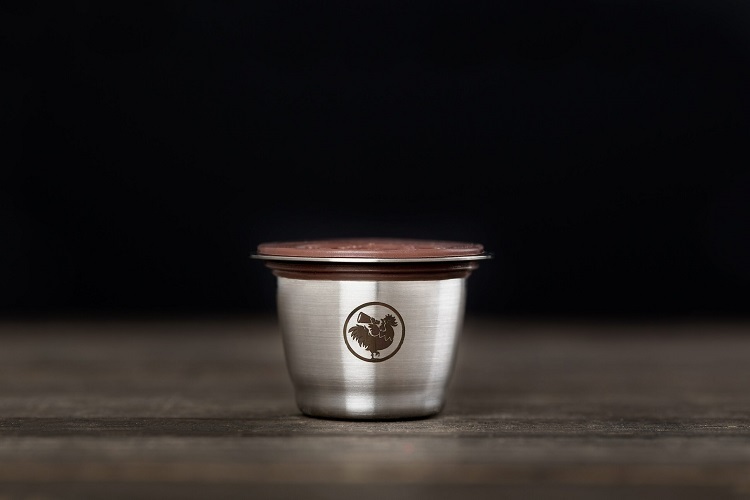Foods
Different Types of Bakery Products

Some walks are worth remembering and walking in a bakery, full of freshly baked bread, that dripping chocolate syrup is satiating in itself. Every bakery around the globe has got something or the other speciality that will surely lift our mood and taste. A bakery seems to be a heaven for all the sweet hoarders and others, anything from the bakery works like therapy. So, let us explore what all you can pick from any bakery, to keep yourself self-motivated.
The list below will help you remind yourself of the good things that you can have while you visit the bakery just to buy a cake.
Bread
Bread loaves are the best thing invented on this Earth. Not only are they used in making a cake or pastry, but varied other types of slices of bread are also used to make healthy and fresh salads where slices of bread help the cakes to get a base, in salads, slices of bread help in filling our tummy a bit.
Doughnuts
Next up in line are doughnuts. These ring-shaped round delicacies are made with a light batter and are deep-fried. Topped with infinite toppings like chocolate syrup with sprinkles, white chocolate spread with chocolate chips, and everything else of your choice. A perfect snack to enjoy with your coffee.
Pies
Another tempting delight that can instantly lift your mood if you have a bite of it with your evening coffee. Pies are a patty, filled in with a mixture that is nutty and sweet. Pies are a good way to meet your hunger pangs the sweet and healthy way, as a variety of pies include fruit chunks and all.
Pastries-
To celebrate any small celebration or to party with self, pastries are the best thing to order from an online bakery and satiate your sweet pangs. Pastries today are not only as good-looking as cakes, but they are also equally tempting like cakes. Layered with fresh cream of frosting, have any such pastry microwaved and top it with simple vanilla ice cream. Enjoy your journey to heaven!
Pizza Base
Though this is not something that can be counted under the “sweet” category, this is also something we often make bakery visits. Homemade pizzas are the best as you need not pay extra for add-on toppings or cheese. Just make a pizza that you think would tempt down your taste buds while you have Sunday-brunch with yourself.
So yeah, all these things that a bakery offers you are just the beginning. Bakeries around the globe are also seen manufacturing some choco chips cookies, coca-cola cupcakes, French Meringue cookies, macrons, and other such baked delicacies. Not just these, bakeries are also now a place to visit with your fam-jam as many modern bakeries are more sort of cafes and offer you a place to sit, inhale some bakery-fresh fragrance and binge on freshly prepared dishes from there. No need to wait for any occasion to come to visit a bakery, invade the bakery to buy the delights above and go home all happy.
Learn more about the baking different types of cakes and deserts for some special day, on this website: www.firstcoffee.net
Foods
Chow Mein vs Lo Mein Noodle Dishes: Unlock the Difference

Chow Mein vs Lo Mein are both popular Chinese noodle dishes that are enjoyed by people all over the world. While they may seem similar, there are some key differences that set them apart. Let’s unlock the difference between Chow Mein vs Lo Mein noodle dishes!
Table of Contents
What is Chow Mein?
Chow Mein is a delicious and versatile Chinese dish that has become popular around the world. The name “Chow Mein” translates to “stir-fried noodles” in English, which perfectly describes the essence of this dish. It is a combination of noodles, vegetables, and often meat or seafood, all stir-fried together to create a flavorful and satisfying meal.
The key component of Chow Mein is the noodles. These noodles are typically made from wheat flour and are often thin and slightly yellow in color. They have a delightful chewy texture that adds a unique element to the dish. In addition to the noodles, Chow Mein incorporates a colorful medley of vegetables, such as cabbage, carrots, bean sprouts, bell peppers, and onions.
These vegetables not only provide a variety of flavors but also add a pleasing crunch and vibrant appearance to the dish. To enhance the taste, Chow Mein is often prepared with a savory sauce. The sauce may include ingredients like soy sauce, oyster sauce, garlic, ginger, and other seasonings, which infuse the noodles and vegetables with rich and aromatic flavors.
The choice of protein in Chow Mein can vary based on personal preferences and dietary restrictions. It can include chicken, beef, shrimp, pork, or even tofu for a vegetarian option. The protein is typically cooked alongside the vegetables, allowing the flavors to meld together and create a harmonious combination.
How to Make Chow Mein?
To make Chow Mein, you can follow this simple recipe:
Ingredients:
- 8 ounces Chow Mein noodles
- 2 tablespoons vegetable oil
- 1 onion, thinly sliced
- 2 cloves garlic, minced
- 1 cup sliced carrots
- 1 cup sliced bell peppers (any color)
- 1 cup sliced cabbage
- 1 cup bean sprouts
- 1 cup sliced mushrooms
- 1/2 cup sliced green onions
- 1/4 cup soy sauce
- 2 tablespoons oyster sauce
- 1 tablespoon sesame oil (optional)
- Salt and pepper to taste
Instructions:
- Cook the Chow Mein noodles according to the package instructions. Drain and set aside.
- Heat the vegetable oil in a large pan or wok over medium-high heat.
- Add the sliced onion and minced garlic to the pan and sauté for 2-3 minutes until they become fragrant and slightly softened.
- Add the sliced carrots, bell peppers, cabbage, bean sprouts, and mushrooms to the pan. Stir-fry the vegetables for about 5-6 minutes until they are tender-crisp.
- Push the vegetables to one side of the pan and add the cooked Chow Mein noodles to the other side. This allows the noodles to heat through without becoming mushy.
- In a small bowl, whisk together the soy sauce and oyster sauce. Pour the sauce over the noodles and vegetables, and toss everything together until well combined. You can adjust the amount of sauce according to your taste preferences.
- Add the sliced green onions to the pan and stir-fry for another minute.
- If desired, drizzle some sesame oil over the Chow Mein for added flavor.
- Season with salt and pepper to taste. Remember to taste and adjust the seasoning accordingly.
- Remove the Chow Mein from the heat and transfer it to a serving dish.
- Serve hot and enjoy your homemade Chow Mein!
Feel free to customize this recipe by adding your favorite proteins such as chicken, beef, shrimp, or tofu. You can also experiment with different vegetables and seasonings to create your own unique variation of Chow Mein.
Types of Chow Mein
When it comes to Chow Mein, there are several delicious variations to explore. Each type offers its own unique combination of flavors and ingredients. Here are some popular types of Chow Mein:
Chicken Chow Mein: This variation of Chow Mein features tender pieces of chicken stir-fried with noodles and an assortment of vegetables. The chicken is usually marinated in soy sauce or other seasonings to enhance its taste. This type of Chow Mein is a favorite among chicken lovers.
Beef Chow Mein: Beef Chow Mein is prepared by stir-frying thinly sliced beef along with the noodles and vegetables. The beef is often marinated in a flavorful sauce to infuse it with deliciousness. The combination of tender beef, chewy noodles, and crisp vegetables makes this version a hearty and satisfying choice.
Shrimp Chow Mein: Shrimp lovers can indulge in Shrimp Chow Mein, where succulent shrimp takes center stage. The shrimp is stir-fried along with the noodles and vegetables, creating a delightful seafood-infused Chow Mein. This variation offers a delicate and savory taste.
Vegetable Chow Mein: For vegetarians or those looking for a lighter option, Vegetable Chow Mein is an excellent choice. It combines an array of colorful vegetables such as cabbage, carrots, bell peppers, bean sprouts, mushrooms, and more. The result is a vibrant and nutritious dish that still provides the satisfying flavors and textures of Chow Mein.
Singapore Chow Mein: Singapore Chow Mein is a spicier version of the classic dish. It typically includes curry powder or paste, giving it a distinct and aromatic flavor. Along with the usual ingredients like noodles, vegetables, and protein, Singapore Chow Mein offers a fiery kick that adds excitement to every bite.
House Special Chow Mein: House Special Chow Mein is a versatile type that combines multiple proteins like chicken, beef, and shrimp, along with an assortment of vegetables. It is a flavorful and filling option that offers a little bit of everything, making it an excellent choice for those who want to sample a variety of flavors.
These are just a few examples of the types of Chow Mein you can find. It’s worth noting that some variations may differ based on regional preferences and specific restaurant offerings. Feel free to explore and discover your favorite type of Chow Mein, or even create your own personalized version by combining different ingredients and flavors.
What is Lo mein?
Lo Mein is a popular Chinese noodle dish that has gained widespread popularity in many parts of the world. It is a flavorful and satisfying dish that features soft and chewy noodles combined with a variety of vegetables, proteins, and a savory sauce. The name “Lo Mein” translates to “tossed noodles” in English, which perfectly describes the cooking technique used to prepare this dish.
The key component of Lo Mein is the noodles. These noodles are typically made from wheat flour and eggs, giving them a slightly yellow color and a rich flavor. The noodles used in Lo Mein are thicker and softer compared to the noodles used in Chow Mein, which contributes to the dish’s distinct texture. They have a delightful chewiness that pairs well with the other ingredients.
Lo Mein offers a wide range of possibilities when it comes to ingredients. Common additions include a medley of vegetables such as sliced carrots, bell peppers, broccoli, bok choy, mushrooms, and bean sprouts. These vegetables not only provide a variety of flavors and textures but also add vibrant colors to the dish.
Additionally, proteins like chicken, beef, shrimp, pork, or tofu are often added to make Lo Mein a complete and satisfying meal. The choice of protein depends on personal preferences and dietary considerations. The noodles and ingredients are stir-fried together in a wok or a large skillet, allowing the flavors to blend and the noodles to absorb the delicious sauce.
The sauce used in Lo Mein is typically a combination of soy sauce, oyster sauce, garlic, ginger, and other seasonings. It adds a savory and umami-rich taste to the dish, complementing the noodles and ingredients perfectly. Some variations of Lo Mein may incorporate additional ingredients like sesame oil or chili paste for added depth of flavor.
How to Make Lo Mein?
Here’s a step-by-step guide on how to make delicious Lo Mein at home:
Ingredients:
- 8 ounces Lo Mein noodles
- 2 tablespoons vegetable oil
- 2 cloves garlic, minced
- 1 tablespoon grated ginger
- 1 cup sliced carrots
- 1 cup sliced bell peppers (any color)
- 1 cup sliced cabbage
- 1 cup sliced mushrooms
- 1 cup bean sprouts
- 1 cup sliced green onions
- 1/4 cup soy sauce
- 2 tablespoons oyster sauce
- 1 tablespoon sesame oil (optional)
- Salt and pepper to taste
Instructions:
- Cook the Lo Mein noodles according to the package instructions. Drain and set aside.
- Heat the vegetable oil in a large pan or wok over medium-high heat.
- Add the minced garlic and grated ginger to the pan and sauté for about 1 minute until fragrant.
- Add the sliced carrots, bell peppers, cabbage, mushrooms, and bean sprouts to the pan. Stir-fry the vegetables for about 4-5 minutes until they start to soften.
- Push the vegetables to one side of the pan and add the cooked Lo Mein noodles to the other side. This allows the noodles to heat through without getting mushy.
- In a small bowl, whisk together the soy sauce and oyster sauce. Pour the sauce over the noodles and vegetables, tossing everything together until well coated. Adjust the amount of sauce according to your taste preference.
- Add the sliced green onions to the pan and stir-fry for another minute, allowing them to wilt slightly.
- If desired, drizzle sesame oil over the Lo Mein for an extra touch of flavor.
- Season with salt and pepper to taste. Remember to taste and adjust the seasoning accordingly.
- Remove the Lo Mein from the heat and transfer it to a serving dish.
- Serve hot and enjoy your homemade Lo Mein!
Feel free to experiment with different vegetables and seasonings to create your own unique variation of Lo Mein. This versatile dish offers endless possibilities and allows you to tailor it to your personal taste preferences. Enjoy the flavors and textures of this classic Chinese noodle dish right in the comfort of your own home.
What is the difference between Chow Mein vs Lo Mein?
Chow Mein and Lo Mein are both popular Chinese noodle dishes, but they have distinct differences in terms of preparation, ingredients, and texture. Here’s a breakdown of the main differences between Chow Mein and Lo Mein:
Noodle Texture: The primary difference between Chow Mein and Lo Mein lies in the texture of the noodles used. In Chow Mein, the noodles are typically crispy and fried, giving them a crunchy texture. On the other hand, Lo Mein noodles are soft, fresh, and boiled, resulting in a chewy and tender texture.
Cooking Method: Chow Mein noodles are usually parboiled and then stir-fried at high heat, which contributes to their crispy texture. The stir-frying process gives Chow Mein a slightly charred and crunchy exterior. Lo Mein noodles, on the other hand, are boiled until fully cooked and then tossed in the stir-fried ingredients or sauce.
Sauce: Another difference between Chow Mein and Lo Mein is the sauce used. Chow Mein tends to have a lighter sauce, usually made from soy sauce, oyster sauce, or a combination of both. The sauce is typically added during the stir-frying process to coat the crispy noodles and other ingredients. Lo Mein, on the other hand, has a more substantial sauce that is usually a mixture of soy sauce, oyster sauce, and other seasonings. The sauce is typically added to the boiled noodles and ingredients, creating a saucier and more flavorful dish.
Ingredients: While both Chow Mein and Lo Mein can contain similar vegetables and proteins, there can be variations in the types of ingredients used. Chow Mein often includes a combination of stir-fried vegetables, such as cabbage, carrots, bean sprouts, and onions, along with proteins like chicken, beef, shrimp, or pork. Lo Mein, on the other hand, can incorporate a wider variety of vegetables and proteins, as the soft noodles can better accommodate different ingredients. It may include a more diverse range of vegetables like bell peppers, mushrooms, broccoli, and bok choy.
Presentation: Chow Mein and Lo Mein also differ in their presentation. Chow Mein is typically served with the crispy noodles as the base, topped with the stir-fried vegetables and protein. The noodles retain their crispy texture even when combined with the sauce and ingredients. Lo Mein, on the other hand, is served with the soft and boiled noodles as the base, mixed with the saucy ingredients. The noodles in Lo Mein absorb the flavors of the sauce and ingredients, resulting in a more cohesive and blended dish.
How many calories are in Lo Mein vs Chow Mein?
The calorie content of Lo Mein vs Chow Mein can vary depending on the specific recipe and ingredients used. However, I can provide you with a general idea of the calorie range for these dishes.
Lo Mein: On average, a serving of vegetable Lo Mein (around 1 cup or 220 grams) contains approximately 250-350 calories. If you add chicken, beef, shrimp, or other proteins to the Lo Mein, the calorie count will increase accordingly. Keep in mind that the sauce used and the amount of oil used for cooking can also contribute to the overall calorie content.
Chow Mein: The calorie content of Chow Mein can vary as well, depending on the ingredients and cooking methods. A typical serving of vegetable Chow Mein (around 1 cup or 220 grams) contains approximately 300-400 calories. Again, the addition of proteins and the type of sauce used can affect the calorie count.
What type of noodles are used in each type of dish?
In Chow Mein vs Lo Mein, different types of noodles are used to create their distinct textures and flavors. Here are the types of noodles commonly used in each dish:
Chow Mein:
Chow Mein traditionally uses Chinese egg noodles. These noodles are made with wheat flour and eggs, giving them a yellowish color and a slightly chewy texture. Chinese egg noodles are often thin and have a firm and springy texture when cooked. They are suitable for stir-frying and can withstand the high heat used in the cooking process. The crispy texture of Chow Mein noodles is achieved by frying them until they become golden and crunchy.
Lo Mein:
Lo Mein is typically made with Chinese wheat noodles, which are also known as “soft noodles” or “fresh noodles.” These noodles are made from wheat flour and water, and they have a soft and elastic texture. Chinese wheat noodles are thicker and softer compared to Chow Mein noodles. They have a more tender and delicate texture, which allows them to absorb the flavors of the sauce and other ingredients in the dish. Lo Mein noodles are boiled until they become fully cooked and then tossed with the sauce and stir-fried ingredients.
Final Thoughts
Chow Mein vs Lo Mein are two popular Chinese noodle dishes that offer distinct flavors, textures, and cooking methods. While both dishes feature noodles as their main ingredient, they differ in terms of noodle texture, cooking techniques, and sauce consistency.
Chow Mein stands out with its crispy and fried noodles, giving it a delightful crunch and a slightly charred flavor. The noodles are stir-fried at high heat, along with a combination of vegetables, proteins, and a lighter sauce. The result is a dish that offers a satisfying contrast between the crispy noodles and the tender ingredients.
FAQs
What are the ingredients in Lo Mein sauce?
Lo Mein sauce typically includes soy sauce, oyster sauce, minced garlic, grated ginger, and sometimes additional seasonings like sesame oil or rice vinegar.
What are the ingredients in Chow Mein?
Chow Mein commonly includes noodles, vegetables (such as cabbage, carrots, and bean sprouts), protein (like chicken, beef, or shrimp), soy sauce, oyster sauce, garlic, ginger, and cooking oil.
What is in the typical serving of Lo Mein?
A typical serving of Lo Mein contains noodles, vegetables, protein, and the sauce. The exact composition may vary depending on personal preferences and the recipe being followed.
Is Lo Mein noodles ahrd or soft?
Lo Mein noodles are typically soft and tender, as they are boiled separately from the other ingredients and then tossed with the stir-fried components.
Foods
Benefits of Coffee Capsules

Coffee businesses have seen a boom owing to the arrival of coffee capsules in the market. Coffee capsules are used to produce excellent espresso coffee within a few minutes. Offices, cafes, and restaurants can now provide a brewing cup of coffee with minimum efforts. Coffee capsules have several advantages over the traditional coffee pods, some of which are enumerated as follows:
- Convenient- Unlike regular coffee pods, coffee capsules have pre-measured composition, are ground and tamped for the perfect extraction. So, with the least of efforts, you can get aromatic coffee with the blink of an eye. With the coffee capsule, you don’t need to bother about the quantity of water, temperature, tamping, etc. It’s ready before you could complete saying get set to go! It is as easy as dissolving instant coffee.
- Saves time & energy- With coffee capsules, the preparation time is squeezed to just 2 to 3 minutes. So, you don’t need to invest time in grinding it with required pressure, thereby driving out the risk of not getting the right taste and texture. Coffee capsules have them all prepared in advance. So, if you don’t possess those barista skills, you don’t need to worry. Coffee capsules will still help you with a professional coffee flavor and aroma.
- Long shelf life- Coffee capsules stay fresh for a longer time as compared to traditional coffee pods. Coffee capsules preserve aroma and flavor inside the packaging until it is opened. It protects everything as long as for 18 months if kept unopened. The reason why coffee capsules stay fresh is the result of packaging. The coffee beansare roasted, ground, tamped, and packed immediately. It is thereby avoiding any contact with oxygen and moisture, hence, locking the moisture inside.
- Coffee grinders not required- Coffee capsules have ground coffee, so you don’t need to purchase coffee grinders. This, in turn, also saves time, money, efforts and even prevents spillage.
- Minimum wastage- Coffee capsules require the least amount of least of cleaning. These contain previously ground and tamped coffee, which can be prepared in a small container. In addition to this benefit, it requires the least water, so there is minimum spillage. Moreover, it does not require grinding, tamping, and emptying, therefore, no coffee residue is left behind in the container. Hence, the least wastage is there with the usage of coffee capsules.
- Saves money too- No special skills are required to prepare coffee with capsules. So coffee businesses need not pay high salaries to the coffee-making staff. The simplicity at the age saves money, along with a lot of time. Thereby providing quick service to the customers.
- Endless variety- Different flavors are available in coffee capsules. With traditional coffee, you need to prepare the taste, but with coffee capsules, you get previously prepared characters.
- Affordable- Everybody can’t afford a coffee machine wherein you get the process of bean to cup coffee. Whereas, with coffee capsules, you need to buy the capsules ( which are not very costly) and prepare them in the container with some water, of course.
- Can serve a large number of guests at the same time- Due to the ease of preparation of coffee with capsules, a large number of people can be served within a short time.
- Best for offices- When at the office, you lead a time-constrained life. Being tired with loads of work to do, calls for a cup of coffee. Coffee capsules provide you with the convenience of preparing a cup for yourself in just no time. Coffee capsules and a capsule machine are all you need, and coffee is no big task.
Table of Contents
Final verdict
Coffee capsules prove to be handy for cafes, restaurants, and when you throw a party at your place. These fix your caffeine cravings with minimal efforts. The best part being the ease of preparation, such that even the children can prepare you a cup of coffee. Learn more about the pros and cons of different types of drinks that you should know, on this website: www.foody-goody.com
Foods
How Many Ounces in a Clove of Garlic?

Garlic is one of the plants or veggies you either love or hate. Famous for its varied uses and pungent smell, it also has been a staple in every diet for centuries. It is a species in the Allium. Its close relatives include chive, onion, leek, and shallots.
While it thrives in bulbs under the ground, its steams can reach at least two feet.
It has a spectrum of flavors. It can be sweet and spicy, making it a versatile addition to every famous recipe, from pasta, skillet potatoes, bread, steaks, salmon, pork roast to soups.
Like shallots and onions, garlic has many varieties, classified as soft neck and hard neck.
Softneck garlic has pliable central stalk use to make braids. It has a milder flavor and more cloves. Hardneck garlic, on the contrary, has fewer cloves because it is larger. It is also easier to peel.
Table of Contents
How Much Does a Clove of Garlic Weigh?
While there are larger and smaller cloves, their average weight is around 0.1 ounce, according to many. But it may vary depending on its size. The larger a clove, the heavier it is/will be.
How about the head, cup, and teaspoon of garlic? Look at the table below:
| Teaspoon | 0.1 ounce | 2.8 grams |
| Cup | 4.8 ounces | 136 grams |
| Head (17 cloves on average) | 1.7 ounces | 47.6 grams |
What Can You Get From Every Clove of Garlic?
A clove of garlic is small. But the size can be deceiving. It has several healthy compounds our body needs.
Garlic does not gain popularity because of its rich flavor. People love it because it contains minerals and vitamins with potent medicinal properties.
It is a good source of vitamin B6, which may help improve mood and treat anemia. It is rich in vitamin C (necessary for the repair or development of body tissues), manganese (may improve bone health and regulate blood sugar level), and selenium (may boost the immune system or reduce asthma symptoms).
Garlic is a staple in every diet because it is low in calories. A clove is available with at least 4.5 cal, 1 g of carb, and 0.2 g of protein. Experts believe it may reduce blood pressure, lower the risk of severe cardiovascular complications, detoxify heavy metals in our body, and improve bone health.
As a subject of various studies, garlic has strong anti-cancer properties or sulfurous compounds. How do they work? These compounds are found to have the ability to slow DNA replication and increase endoplasmic reticulum stress, which blocks tumors and inhibits any cancerous cells.
Garlic is rich in effective antifungal and antimicrobial properties. No wonder it has been used to treat infection against fungi, viruses, and bacteria for many years now. Often called Russian penicillin, garlic may treat insect bites, warts, and other skin conditions.
What Are the Other Compounds to Get From a Clove of Garlic?
Garlic is high in other nutrients, minerals, and vitamins. These are fiber (0.19g), calcium (16.29mg), iron (0.15mg), potassium (36.09mg), sodium (1.53mg), zinc (0.1mg), copper (0.03mg), lutein (2.34mcg), thiamin (0.02mg), niacin (0.06mg), and more.
Is it Safe to Eat a Raw Garlic Clove?
Of course! You can eat a raw garlic clove. But remember, it has a pungent smell that will cause a garlicky breath. It may result in a burning sensation, loose motions, heartburn, and gases.
If you are allergic to garlic, it is better not to eat it. Common garlic allergy symptoms include skin inflammation, diarrhea, stomach cramps, hives, tingling sensation, vomiting, nausea, nasal congestion, runny nose, wheezing, watery eyes, and sneezing.
If you suffer from any of these signs, be sure to consult a licensed and experienced physician for your safety. Learn more about the kitchen measurement tips and tricks that can help and reduce your struggle with ingredients weighing, on this website: www.al-thai.com

 Business2 years ago
Business2 years agoSeven Ways A Degree In Social Work Impacts The Society

 Social Nerworking5 years ago
Social Nerworking5 years agoFacebook’s Movie Ads now includes Ticket and Showtime Details

 Games4 years ago
Games4 years agoWhat Makes Block Games Different?

 Technology2 years ago
Technology2 years agoBest Messenger Bot Agencies in 2020

 Games2 years ago
Games2 years agoSubway Surfers Hack: Tips and Tricks to Hack for Android/iOS

 Business2 years ago
Business2 years agoWhat Is Cloud Customer Service?

 Games2 years ago
Games2 years ago6 Top-Notch Games Like IMVU

 Entertainment4 years ago
Entertainment4 years agoHere are 5 facts that we love about instagram influencer Tina Kiss






































You must be logged in to post a comment Login